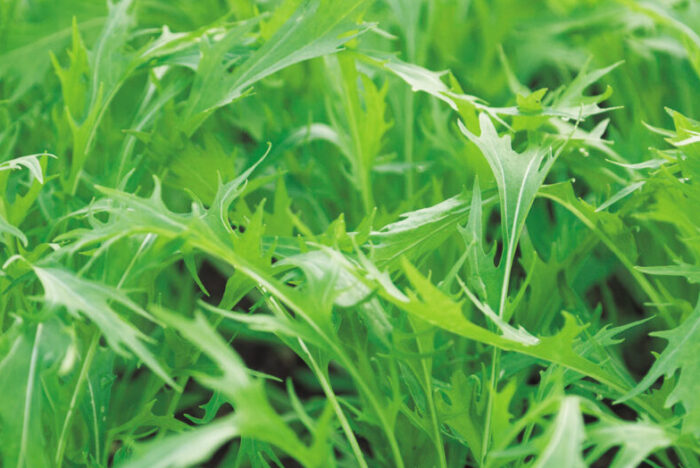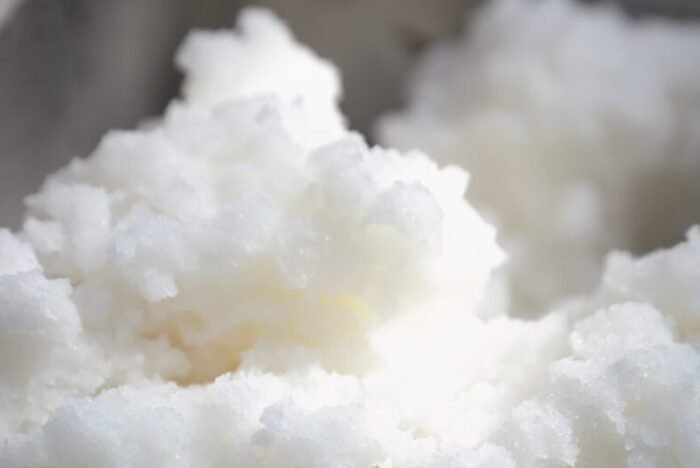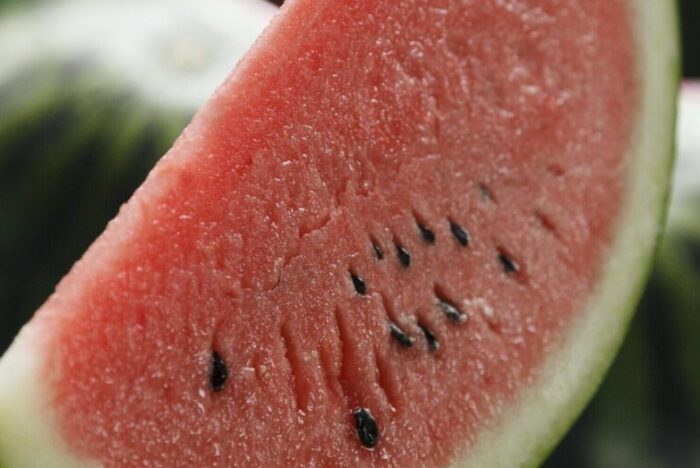JAPAN [Kochi]
Japanese Ingredients for the World’s Top Kitchens #40
TOSA BUNTAN POMELOS
A Taste of the Sun
2024.05.02
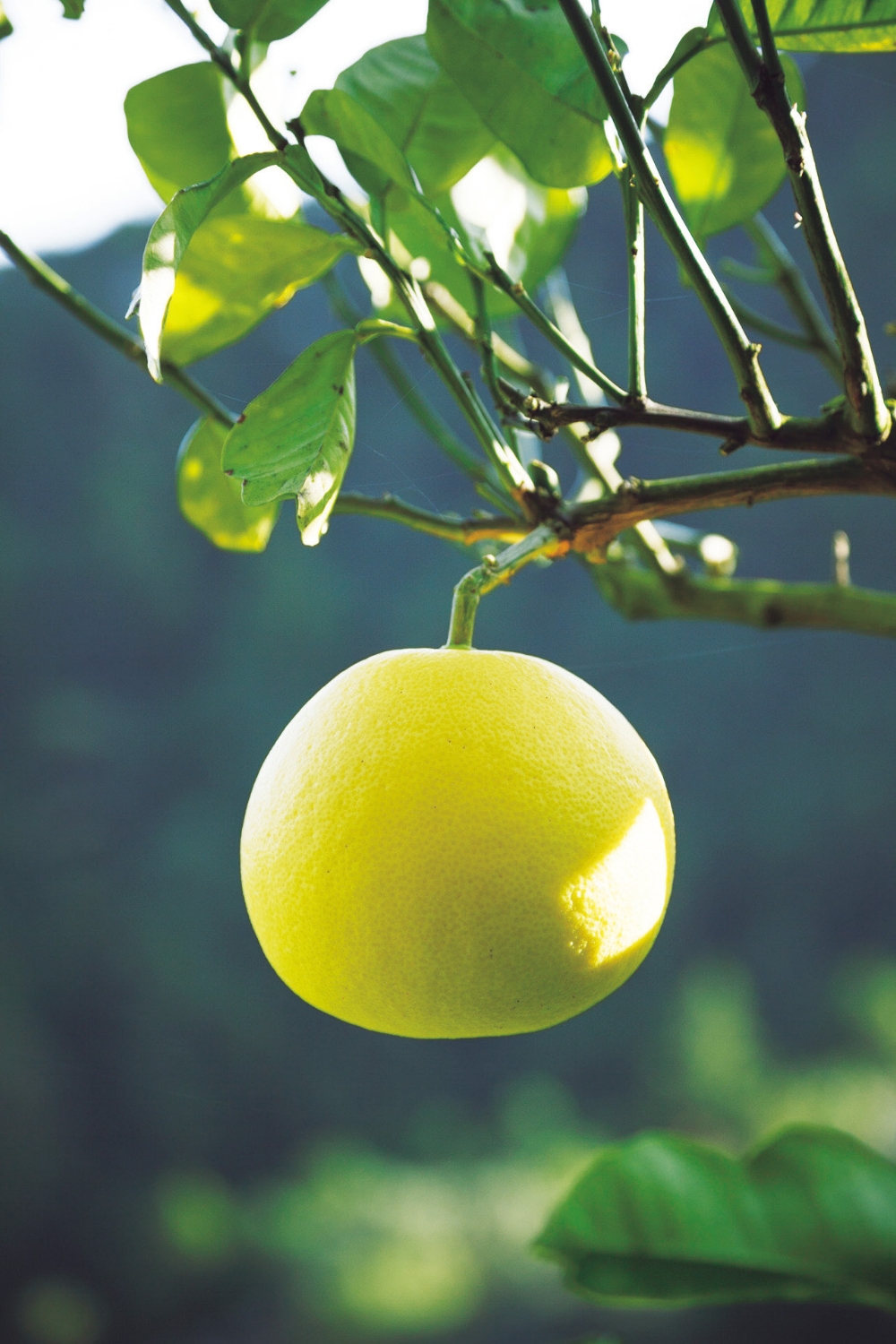
Though the times are always changing, there are certain timeless ingredients from Japan that will never go out of style. Yukio Hattori, president of Hattori Nutrition College in Tokyo, introduces unique labors of love—items grown and produced with care and integrity by hardworking suppliers across the country.
連載:未来に届けたい日本の食材
Shusei and Mayumi Aoki maintain a 3.5-acre orchard of Tosa Buntan pomelo trees in Tosa, a city on the southern coast of Shikoku that is the leading center of pomelo production in Japan. Come harvest time in mid- December, the Aokis’ steep slopes exude the sweet fragrance of the golden fruit, which hails from the Malay Peninsula and Indonesia. Look for Tosa pomelos in stores in Japan in February and March.
“In late spring we prune the trees,” says Shusei. “Around May 10, when the blossoms are 60-percent open, we cross-fertilize with another kind of citrus fruit such as Hyuganatsu. We spend most of the summer weeding and keeping pathways clear. Once the rainy season’s over, in October, we thin out the crop, culling any fruit that’s damaged or too small. In mid-December, we harvest and cover the fruit with straw so it sweetens.
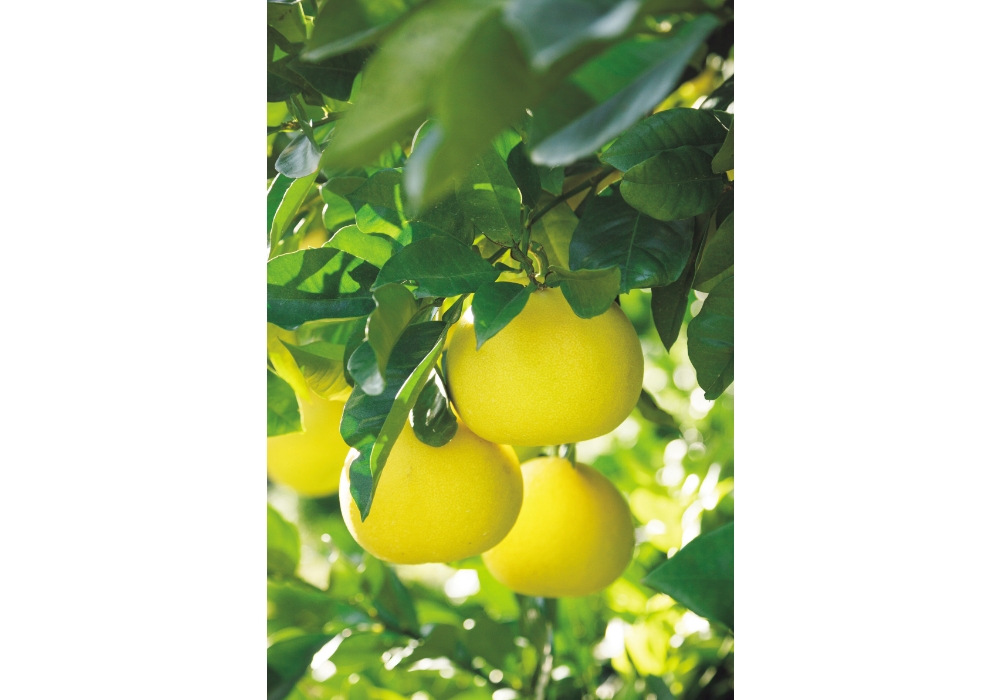
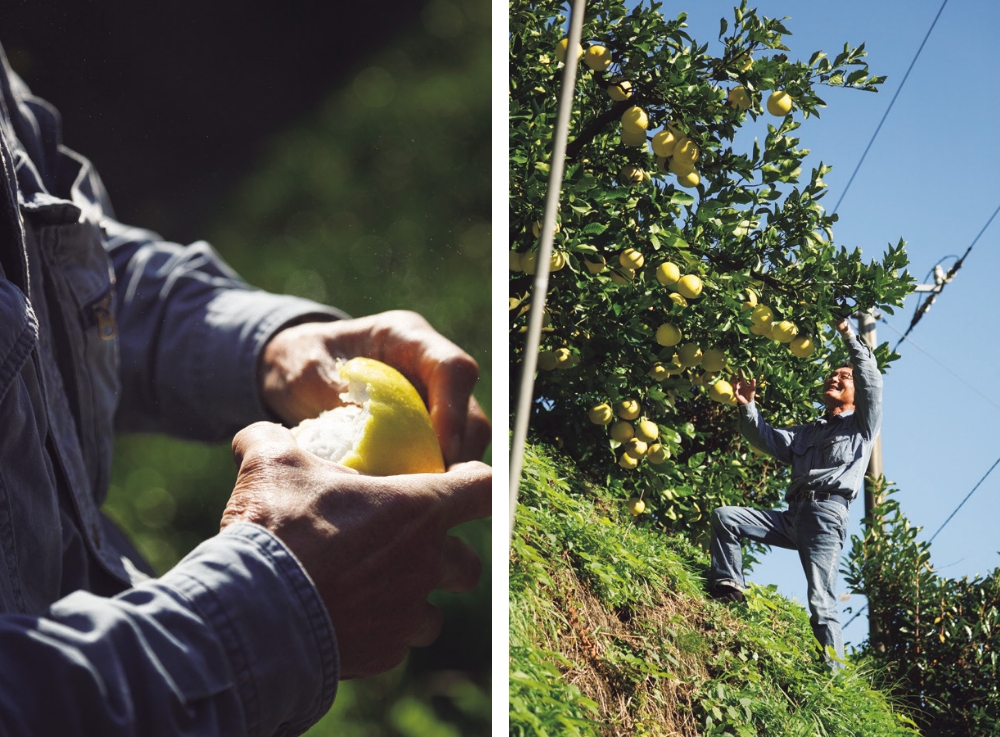
Shusei Aoki has planted his pomelo orchard across three steep slopes, to give the trees plenty of drainage in what is a high-precipitation area. Here he checks the fruit just before harvest.
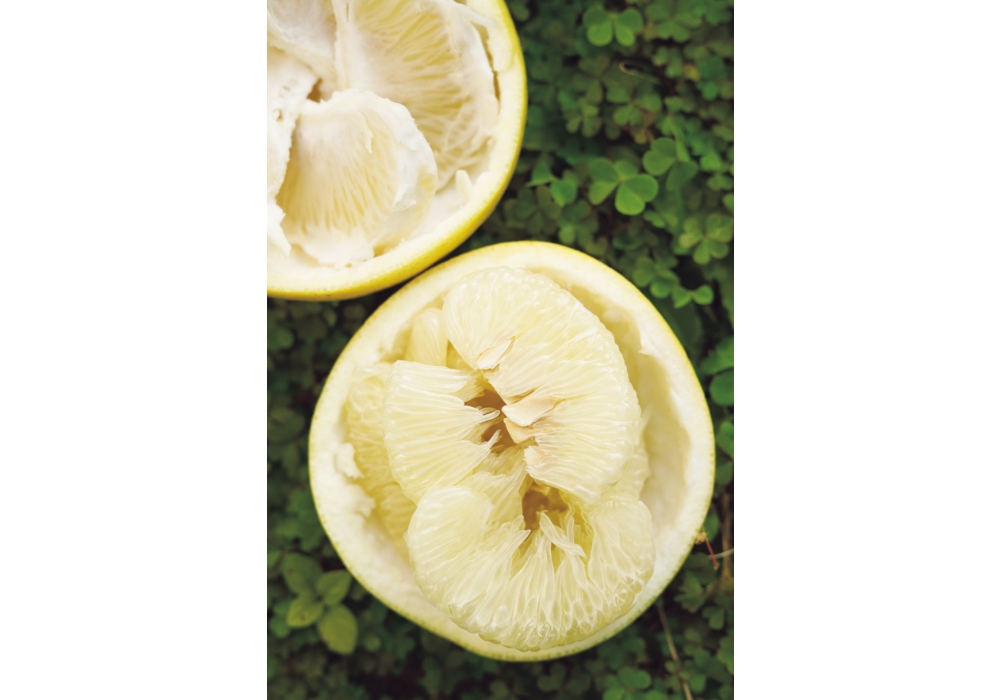
Pomelo skin grows thick in response to direct sun. Aoki keeps it thin through careful shaping of the leaf canopy.

A bird' s-eye view shows only leaf cover, while underneath, each tree is fully laden with fruit. Photosynthesis, not fertilizer, ensures a bountiful crop.
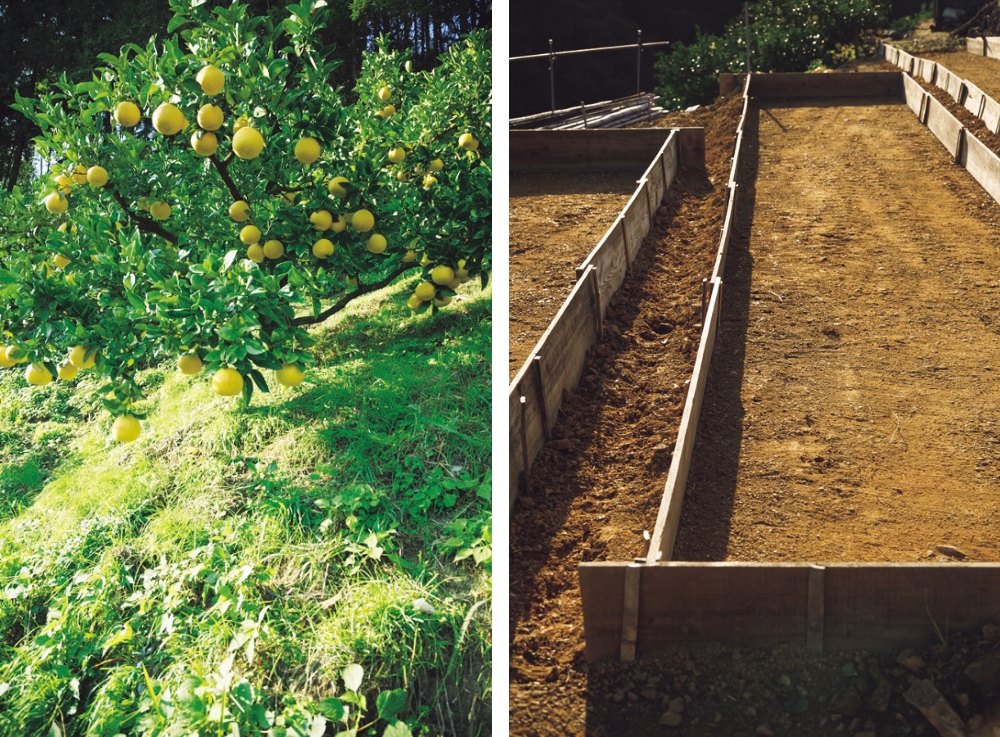
After the December harvest, the pomelos are stored outside for 45 to 60 days in these temporary holding areas, to sweeten.
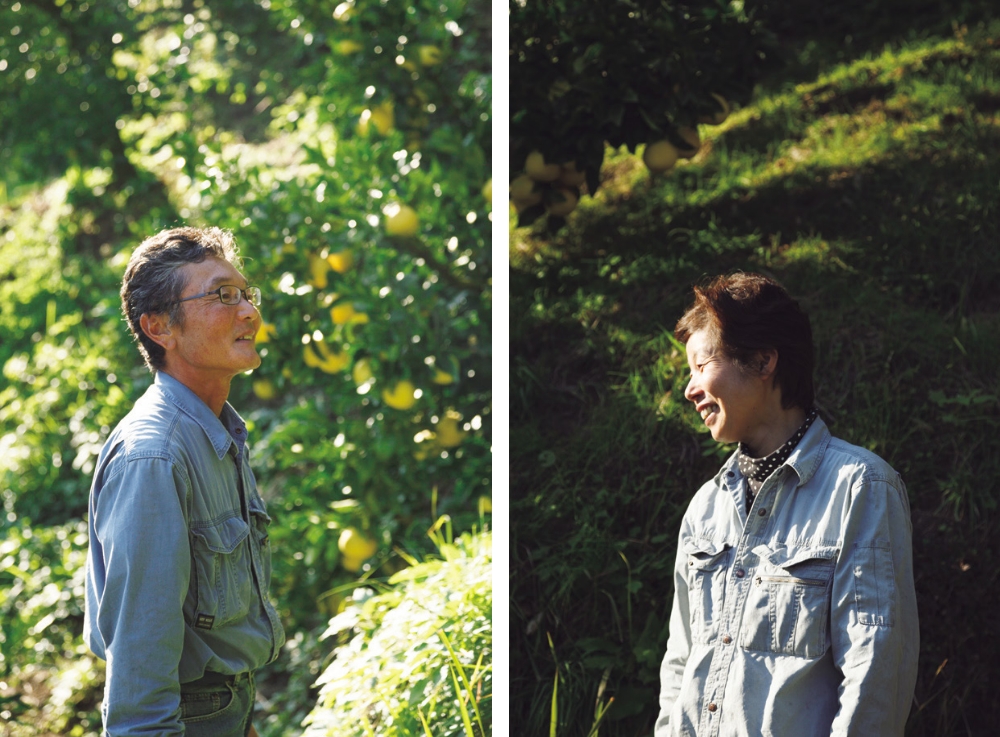
Mayumi and Shusei Aoki lovingly tend their crop.
◎Tosa Pomelo Growers ’ Association
c/o Kochi Prefectural Government Office
☎ 088-821-4806
(The Cuisine Magazine / March 2016)
Online store


